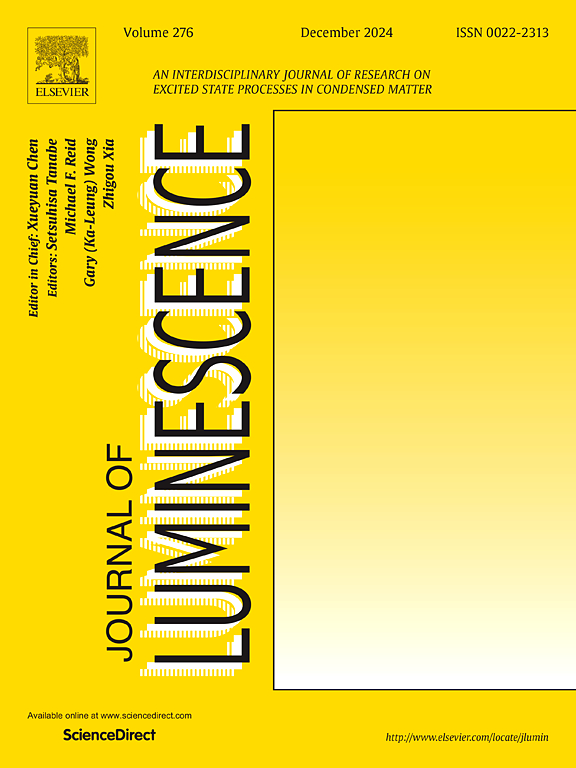基于sinws的肖特基二极管的光致发光和I-V测量的高精度机器学习分析
IF 3.6
3区 物理与天体物理
Q2 OPTICS
引用次数: 0
摘要
采用银辅助化学蚀刻(Ag-ACE)方法,在不同的蚀刻时间(detch)下获得了硅纳米线(SiNWs)结构。Ag/SiNWs形成肖特基势垒,对表面状态高度敏感,这使它们成为光电探测器肖特基二极管的绝佳选择。采用数学(MT)和决策树(DT)算法预测和分析了Ag/SiNWs/Si结的光致发光(PL)强度和电流-电压(I-V)特性作为分离的函数。利用实验测量验证了所建立的模型。并根据统计评价标准进行了对比分析。MT模型表现出优异的性能。该模型基于7阶高斯函数进行训练,用于分析30、90和300 s时间下的PL曲线。在分离时间为300 s时,MSE为1.47 × 10−9,MAE为2.9 × 10−5,RMSE为3.8 10−5,R2为0.9988。对于I-V特性的预测,在相同的蚀刻次数下训练基于第9代多项式函数的数学模型。当分离时间为300 s时,该模型的MSE为1.00 10−14,MAE为8.34 × 10−8,RMSE为1.00 × 10−7,R2为0.9998,表明该模型具有较高的预测精度。所得结果证明了数学模型的卓越能力,并突出了机器学习在sinws肖特基二极管光电实验数据验证中的适用性。本文章由计算机程序翻译,如有差异,请以英文原文为准。
High-precision machine learning analysis of photoluminescence and I-V measurements in SiNWs-based Schottky diodes
Silicon nanowires (SiNWs) structures were obtained by Ag-assisted chemical etching (Ag-ACE) method for different etching durations (detch). Ag/SiNWs form Schottky barriers and are highly sensitive to surface states, which make them excellent for photodetectors Schottky diodes. Mathematical (MT) and decision tree (DT) algorithms were used to predict and analyze the photoluminescence (PL) intensity and current-voltage (I-V) characteristics of Ag/SiNWs/Si junctions as a function of detch. The developed models were validated using experimental measurements. A comparative analysis based on statistical evaluation criteria was also carried out. The MT model shows outstanding performance. This model based on a 7th-order Gaussian function was trained to analyze the PL curves at times of 30, 90, and 300 s. It achieves a MSE of 1.47 × 10−9, a MAE of 2.9 × 10−5, a RMSE of 3.8 10−5, and an R2 of 0.9988 for detch of 300 s. For the prediction of I-V characteristics, the mathematical model based on a 9th generation polynomial function was trained at the same etching times. For detch equal to 300 s, this model achieves an MSE of 1.00 10−14, an MAE of 8.34 × 10−8, an RMSE of 1.00 × 10−7, and an R2 value of 0.9998, demonstrating its high predictive accuracy for this time. The obtained results demonstrate superior capabilities of the mathematical models and highlight the performance of the applicability of machine learning to the validation of opto-electrical experimental data of SiNWs-based Schottky diode.
求助全文
通过发布文献求助,成功后即可免费获取论文全文。
去求助
来源期刊

Journal of Luminescence
物理-光学
CiteScore
6.70
自引率
13.90%
发文量
850
审稿时长
3.8 months
期刊介绍:
The purpose of the Journal of Luminescence is to provide a means of communication between scientists in different disciplines who share a common interest in the electronic excited states of molecular, ionic and covalent systems, whether crystalline, amorphous, or liquid.
We invite original papers and reviews on such subjects as: exciton and polariton dynamics, dynamics of localized excited states, energy and charge transport in ordered and disordered systems, radiative and non-radiative recombination, relaxation processes, vibronic interactions in electronic excited states, photochemistry in condensed systems, excited state resonance, double resonance, spin dynamics, selective excitation spectroscopy, hole burning, coherent processes in excited states, (e.g. coherent optical transients, photon echoes, transient gratings), multiphoton processes, optical bistability, photochromism, and new techniques for the study of excited states. This list is not intended to be exhaustive. Papers in the traditional areas of optical spectroscopy (absorption, MCD, luminescence, Raman scattering) are welcome. Papers on applications (phosphors, scintillators, electro- and cathodo-luminescence, radiography, bioimaging, solar energy, energy conversion, etc.) are also welcome if they present results of scientific, rather than only technological interest. However, papers containing purely theoretical results, not related to phenomena in the excited states, as well as papers using luminescence spectroscopy to perform routine analytical chemistry or biochemistry procedures, are outside the scope of the journal. Some exceptions will be possible at the discretion of the editors.
 求助内容:
求助内容: 应助结果提醒方式:
应助结果提醒方式:


